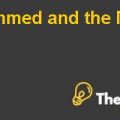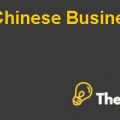Introduction
Brazil in the last decade has emerged as one of the largest and growing economic power. The country has witnessed a sustainable economic growth in the recent years with an annual growth rate of 2% and 7.5% of the GDP. Brazil encountered with the constraints of the economic recession and was able to get rid of it in a very short period. The economic policy of the government played a crucial role in showing resistance towards economic recession. During the years of Heroine Cardoso and Luiz Inacio, the policies that were made were favoring the economic growth of the company addressing some of the core issues like unemployment and were able to attain a significant decrease in the unemployment rate.
The reasons that were supportive of the economic growth included the commodity boom that gave rise to the exports that later on became a significant contributor to the economy. Due to all of these positive sights the country was facing some issue due to Custo Brasil or high cost. This factor was significant in reducing the economic competitiveness of the country. The country’s tax system, interest rates, poor education system and poor infrastructure were also under the causes of decreasing competitiveness.
With Rousseff elected as the new president, some prominent challenges were in front of her that needed immediate attention. The issues like growing inflation, exchange rate and economic stability along with the task of increasing exports were the core challenges for the government of Rousseff. The aim was to increase the competitiveness of the country to become an economic powerhouse.
Problem Statement
The government of Rousseff was under the burden of increasing the economic competitiveness of the country. The target was to decrease the inflation rate and give the exchange rate balance and giving an increase to exports and to increase the GDP growth rate as well. These issues were to be addressed keeping in mind the constraints like poor infrastructure, education system, tax policies, and lack of skilled labor.
Analysis
The analysis portion first of all highlights the country’s internal strengths and weakness and also highlights the external opportunities and threats using the SWOT analysis model. Furthermore, the analysis of government policies to address the core issues are also highlighted.
SWOT
Strengths: The country is amongst the leading developing nations and has sustained a decent economic growth in the recent years. Adding to the strengths of the country, that is the commodity boom that gave rise to the exports of the country and the country became the largest exporter of soybeans and iron ore. Some of the other factors in the years that has strengthened the country are the decreasing trends towards poverty, and unemployment and increasing inflow of the foreign investment in the country.
Weaknesses: Custo Brasil or high cost is the biggest factor towards the declining competitiveness of the country. Furthermore, factors like poor infrastructure and undeveloped education system are added into the weaknesses of the country. The complications with the tax system, high-interest rates and corruption, especially in the private sector are the concerning factors that are creating barriers for the objectives to be achieved.
Opportunities: the opportunities are prominent for Brazil to grab with the issues and the factors generating those issues are vital. The country can lower the interest rates and encourage local manufacturers to increase the domestic production and get rid of the dependency over China. By decreasing the interest rate local investors and manufacture will get encouragement, and the country can develop a strong and competitive domestic market. In order to decrease the unemployment rate, the country needs to improve its infrastructure and education system to develop skilled labor and educated people to serve the private sector.
Threats: The increasing flow of foreign investment is good, but is also imposing threats like appreciating the currency and damaging the domestic market. Since the country lacks in skilled labor, the private sector will be dominated by foreign companies as the competition from the domestic market will be very minimal. Secondly the growing current war is also a major threat to Brazil.
Situation Analysis
The government of Rousseff in an attempt to improve competitiveness addressed the issue of improving infrastructure. Infrastructure plays a vital role in developing the domestic market. The strategy adopted by the Rousseff government was the public-private partnership and was aiming to provide jobs with attractive salary packages by reducing the cost for the local businessmen and taxpayers. The role of infrastructure....................
This is just a sample partial case solution. Please place the order on the website to order your own originally done case solution.
In recent decades, the future of Brazil as the world's leading economic power appeared certain. Expansion of the middle class and commodity boom fueled by economic growth, with GDP growth hit a peak of 7.5% in 2010. However, the high cost of doing business in Brazil, known as the "Custo Brasil", was hurting domestic production, while incoming foreign investments threatened to crush the Brazilian market. Under President Dilma Rousseff, the economic growth to a standstill, and Rousseff administration struggled to find an optimal balance between the reduction of inflation, maintaining a flexible exchange rate, and increase the competitiveness of Brazilian exports. "Hide
by Laura Alfaro, Hilary White Source: Harvard Business School 30 pages. Publication Date: 02 Oct 2012. Prod. #: 713040-PDF-ENG














